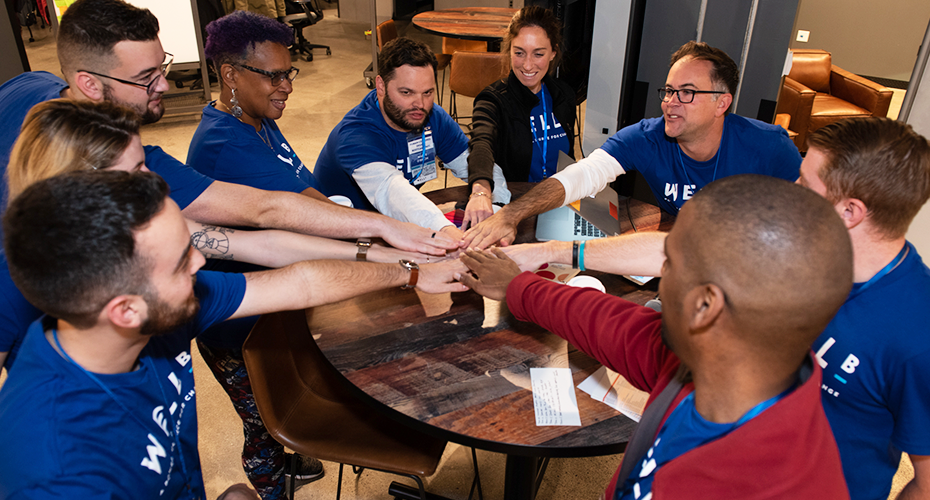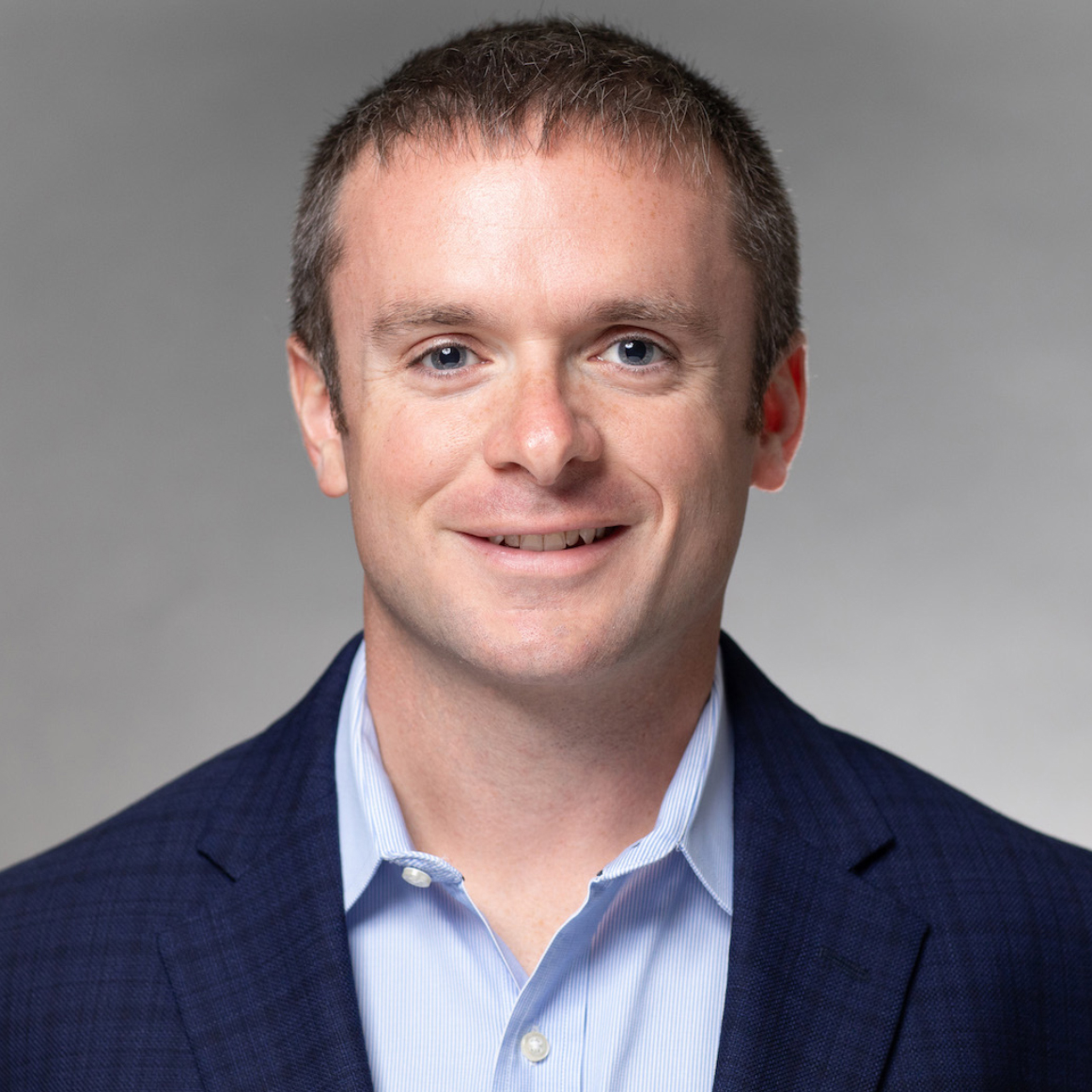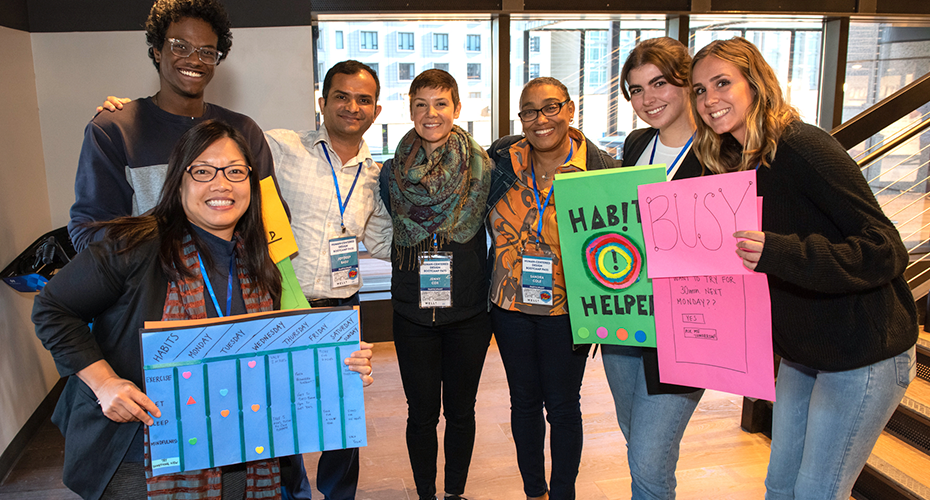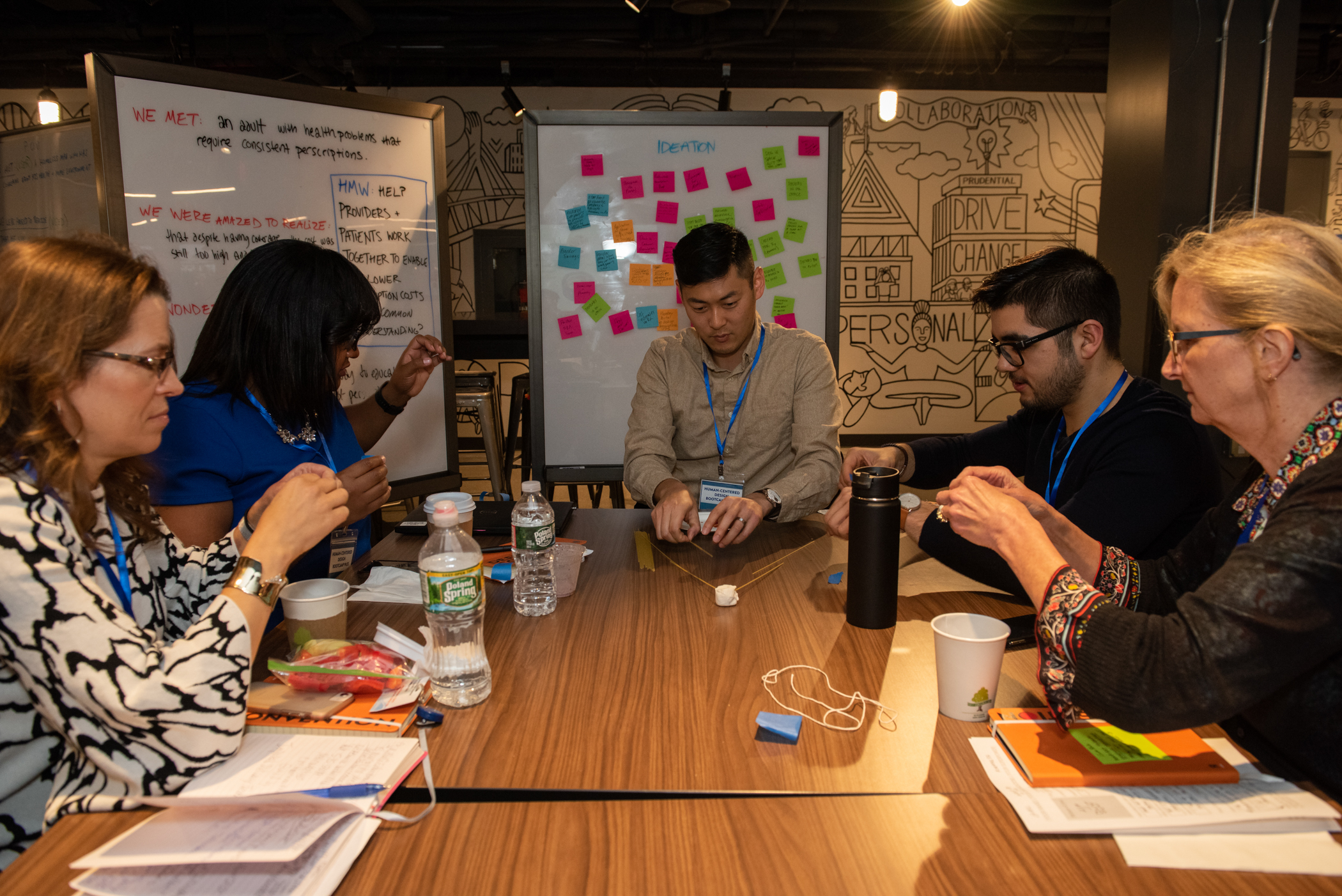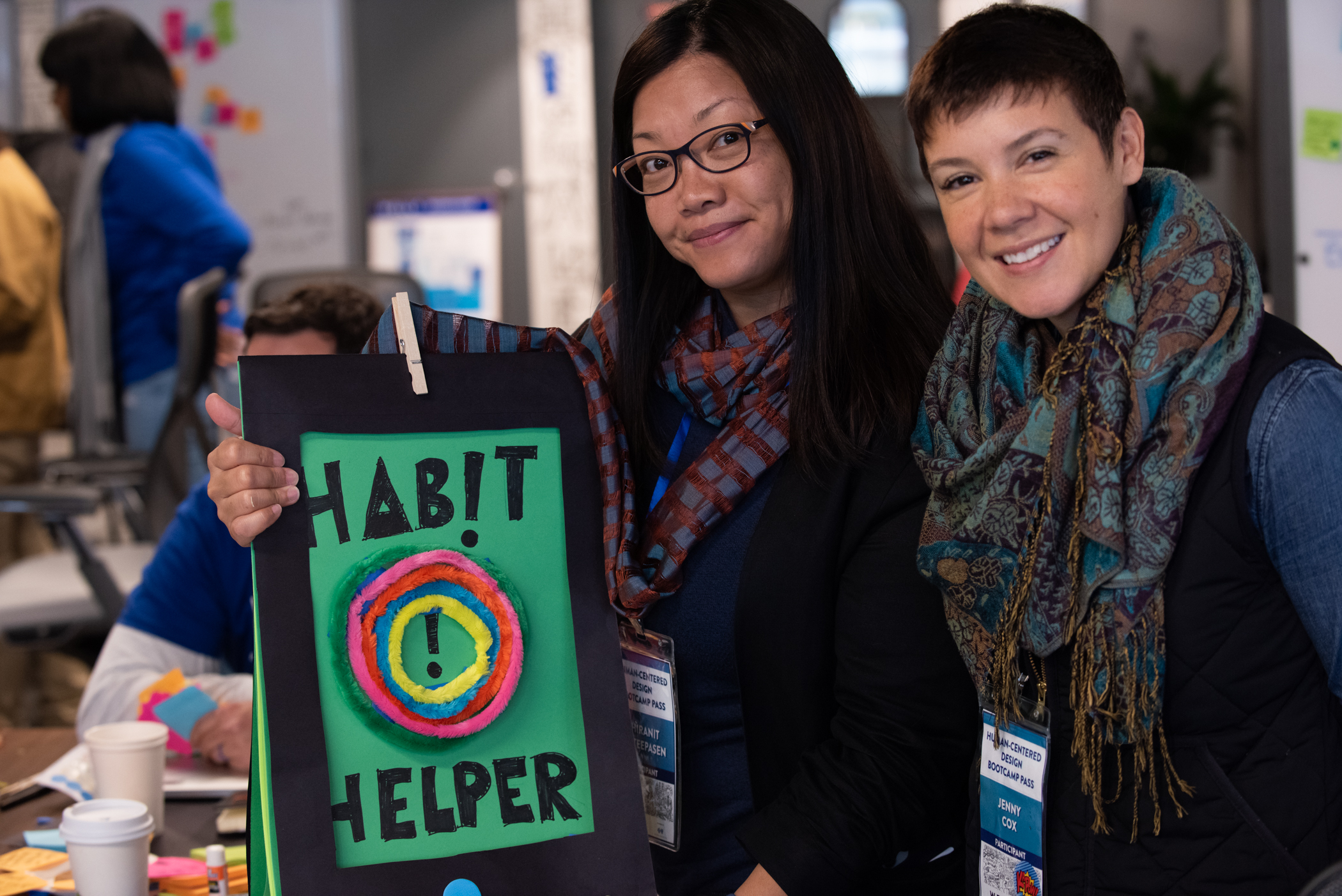Nov 4, 2019
Human-centered design bootcamps drive innovation in health care
Design thinking is providing health care innovators with new skills and offering solutions for some of the industry’s biggest challenges, according to experts in the field.
“For me, it’s common sense,” said Tim Berendt, director of innovation at Well-B, the innovation center of Blue Cross Blue Shield of Massachusetts. “It seems like such an intricate process, but really is just about going to talk to people to gain insights, unearth opportunities, and solve problems.”
Human-centered design was originally pioneered as a way to improve systems, processes and products. It has been adopted by some of the world’s leading companies, such as Google and Apple, and taught at universities around the world, including Stanford's d.school. The approach puts the consumer first, and encourages innovators to walk in the shoes of the people for whom they hope to innovate.
Problem-solving with empathy
That’s exactly what a diverse group of 70 health care professionals, consumers and students did during a recent two-day design thinking “bootcamp” sponsored by Well-B in partnership with MIT Hacking Medicine. Participants were broken up into teams and given different challenges to tackle, all centered around the overall consumer experience in health care.
The groups went out into the streets of Boston and talked to people to see what ideas they could come up with to address issues such as the high cost of prescription drugs or medical care for the homeless. In keeping with the principles of design thinking, the idea was to spur empathy and creativity by bringing health care professionals as well as students who are new to the field face to face with health care consumers.
As 20-year-old Wentworth Institute of Technology junior Ethan Garrett put it: “If you bring in people who don’t know that much about health care, they are going to have ideas that may not work out, but they spur our ideas.”
And, he said, “you can take a crazy idea, tone it down a bit, and work off that."
During the street interviews, younger people told the team the area of their health they wanted the most help with was “mindfulness,” which isn’t something Garrett and his teammates guessed would be the case when they started out.
After polling pedestrians in the Prudential Center, Garrett’s team came up with a concept for a wellness app they called “Habit Helper,” which would set reminders and provide tips for college students to begin to establish good health habits, such as getting enough sleep.
The concept of empathy and understanding how people experience health care are critical elements of design thinking that help researchers “get to the root of the problem,” said Kelsey Gross, who served on a panel offering feedback at the Well-B bootcamp and is the director of product operations for 3Derm Systems, a digital imaging system for dermatology.
“I think it is so important to step out of your day to day when you’re stuck in the midst of trying to solve a problem,” Gross said.
“Design thinking is a user-first and empathy-first approach that allows you to put restrictions like money and time to the side for a minute to come up with ‘what we are trying to do in an ideal world?’ and work backwards to fill in the details.”
Bootcamp participant Rhaissa Germano, 27, works at Dana-Farber Cancer Institute and hopes to be a physician. Germano and her team spoke to a homeless man outside the public library who said he had major complications following surgery and had to be readmitted to the hospital for 10 days.
“We decided to use that as a prompt for our homeless patients: Are they getting the care they need and are their social services being taken care of?” Germano said.
The team created a proposal for a campus of sorts for patients who do not have permanent residences that would provide medical care, transportation, basic needs like food and shelter and, as suggested by several people they spoke to when pitching their plan, mental health and other counseling services. The idea drew praise from a panel of industry experts who offered feedback at the end of the bootcamp’s second day.
“We have to keep the people who really matter in focus,” Germano said. “The whole reason we do this is for the people who need it.”
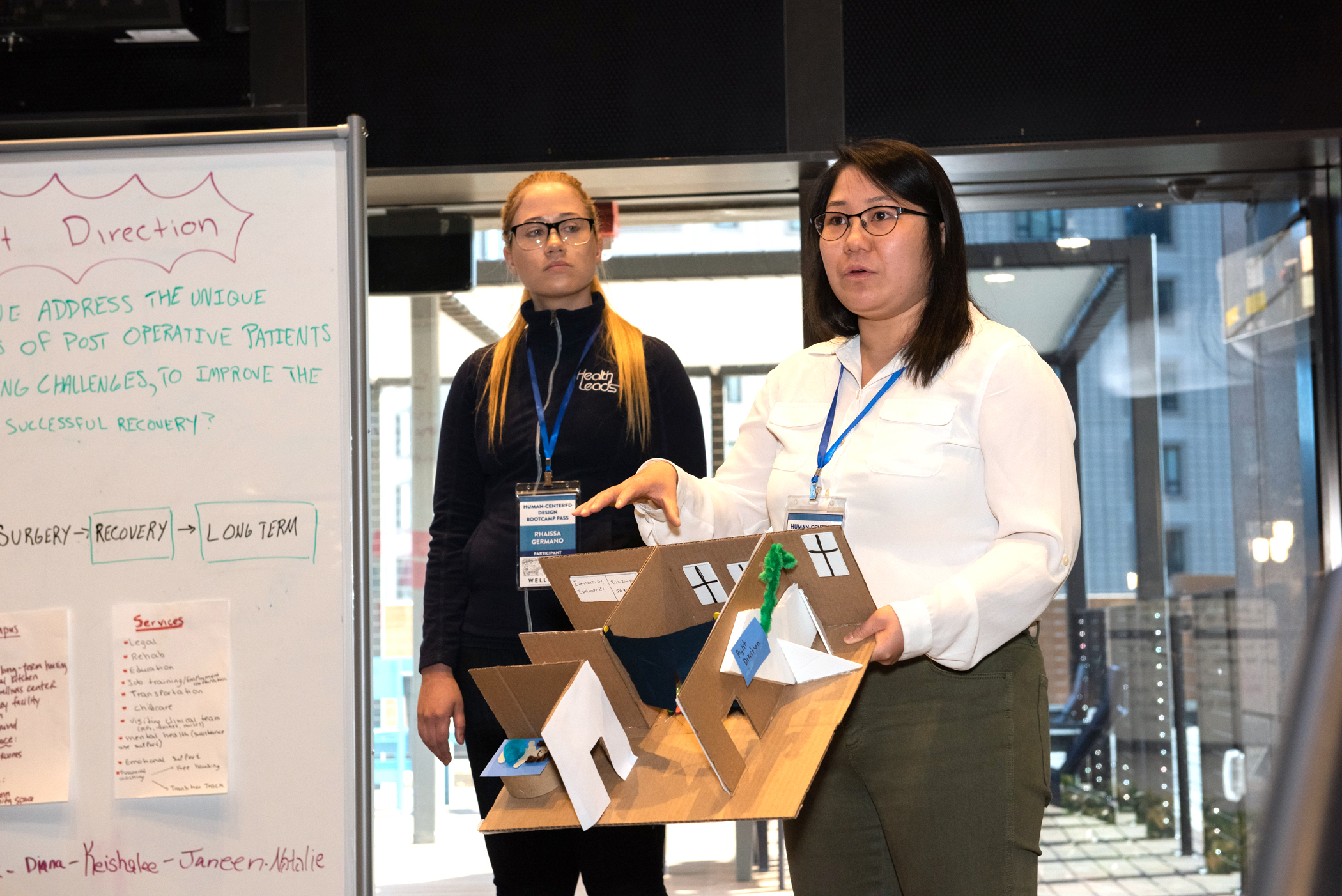
A launchpad for innovation
The real challenge, Gross said, is after the bootcamps are over. Once the idea is born, can the person or team put it into action? Bootcamps can result in teams of people carrying their ideas forward.
That’s what past winners of MIT Hacking Medicine brainstorming sessions, dubbed “hackathons," were able to do. The hackathons bring together engineers, clinicians, entrepreneurs, designers, and corporate partners to engage in the health care design thinking process and develop tangible health solutions.
Past winners showcased some of their innovations at an MIT Hacking Medicine Post Hack event that followed the bootcamp at Well-B.
Bootcamps, hackathons and other similar events have become critical tools in healthcare innovation. And they are driving major strides in the industry, according to 2018 Hackathon winner Chris Balaban whose company, Overjet, is developing a new way to diagnose dental problems using artificial intelligence.
“I think it’s driving people to take big, but justifiable risks,” Balaban said. “Programs like this don’t lead to a linear progression, we are making exponential improvements.”
Well-B sponsors periodic human-centered design bootcamps for students, health professionals and others.
“We use the methods and strategies of design thinking to help encourage new ideas and radical solutions,” Berendt said. “Bootcamps are a way for us to expose our organization and others to a set of processes and mindsets that they can use for the rest of their personal and professional lives.”
PHOTOS BY KENT EARLE
